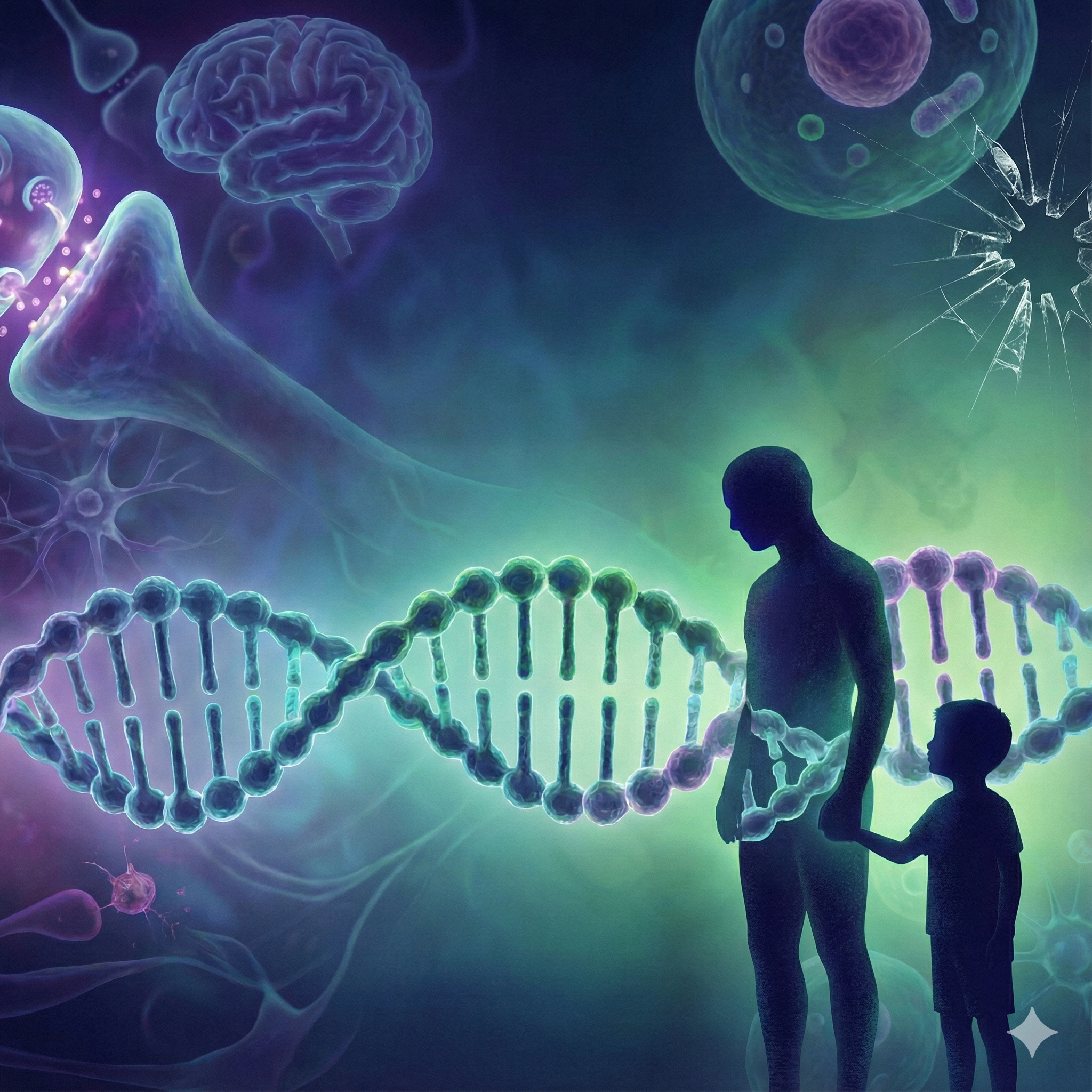Edited by Massimo Lattanzi¹²³, Tiziana Calzone¹²³
¹Italian Association of Psychology and Criminology (AIPC), Rome, Italy ²Italian Centre for Relational Psychotraumatology (CIPR), Pescara-Rome, Italy ³National Observatory on Family Homicides (ONOF), Rome, Italy
Original source for the analytical insight: Study published in Evolutionary Behavioral Sciences concerning factors in the perception of female rivalry in love (competitive intent and competitive ability). The following analysis is a critical re-reading conducted through the theoretical-clinical framework of the Italian Centre for Relational Psychotraumatology (CIPR) and the Italian Association of Psychology and Criminology (AIPC).
Abstract
This article proposes a clinical re-reading of the dynamics of female rivalry in love, starting from a study published in Evolutionary Behavioral Sciences that identifies competitive intent and physical attractiveness as key factors in the perception of a threat. Moving beyond a purely evolutionary interpretation, this work applies the lens of relational psychotraumatology to analyze these dynamics as potential manifestations of past trauma and Complex Post-Traumatic Stress Disorder (C-PTSD). It explores how the perception of a "rival" can act as a trigger for traumatic schemas of abandonment and betrayal, activating states of hypervigilance. Aggressive reactions are mapped onto the dysregulation of Jaak Panksepp's primary emotional systems, hypothesizing a hyper-activation of threat systems (FEAR, RAGE) and a hypo-activation of pro-social systems (CARE, PLAY). Finally, the management of rivalry is linked to insecure attachment styles (anxious, avoidant) and the compulsion to repeat dysfunctional relational scripts. The conclusion emphasizes that a disproportionate reaction to romantic rivalry should not be normalized as mere competition but interpreted as a clinical indicator of deep relational wounds that require targeted therapeutic intervention.
1. Introduction to the study's context
A recent study published in Evolutionary Behavioral Sciences identified two key factors that lead a woman to perceive another as a threatening rival in love: competitive intent (the will to compete, signaled by behaviors such as flirting) and competitive ability (the skill to attract, signaled primarily by physical attractiveness). The research, conducted on 1,169 female university students, demonstrated that while the combination of both factors creates the highest perception of threat, competitive intent is the main driver of aggressive reactions, and physical attractiveness, paradoxically, can also stimulate a desire for friendship.
Although the study frames these behaviors from an evolutionary perspective, an analysis conducted through the lens of relational psychotraumatology—the distinctive approach of CIPR and AIPC—offers crucial clinical and interpretive depth. The dynamics of rivalry, read in this light, are not simple mating strategies but can be complex manifestations of past relational traumas and Complex Post-Traumatic Stress Disorder (C-PTSD).
2. The "threat" as an activation of traumatic schemas
From a psychotraumatological viewpoint, the perception of a "threatening rival" goes beyond social calculation. For an individual with a history of relational trauma (abuse, neglect, insecure attachment), the appearance of a third element in an affective dyad can act as a trigger, reactivating primary fears of abandonment, betrayal, and replacement.
- Hypervigilance and trauma: C-PTSD is characterized by a state of constant hypervigilance towards interpersonal threats. The "rival" is not seen simply as a competitor but as the confirmation of an internalized traumatic schema: "I am not enough," "I will inevitably be abandoned," "the people I trust will hurt me." Her presence threatens not only the current relationship but the very stability of the Self.
- Triangulation dynamics: Childhood experiences of triangulation (e.g., feeling in competition with a sibling for a parent's affection) create a powerful imprint. Romantic rivalry in adulthood can become an arena for the compulsive re-enactment of these unresolved scripts, where the person is forced to "relive" the drama of competing for love in an unconscious attempt to master and resolve it. This aligns with the dynamics observed in patients like "Anna," who complains of “re-living the couple life of [her] parents.”
3. Panksepp's primary emotional systems and the traumatic response
The CIPR approach integrates Jaak Panksepp's model of the seven primary emotional systems. The interaction with a rival can be mapped onto these systems, and a traumatic response reveals their dysregulation.
- Hyper-activation of threat systems: The study notes that competitive intent (the rival's flirting) triggers aggression. This is perfectly consistent with the hypothesis that trauma modulates a hyper-activation of the threat systems:
- FEAR: The fear of abandonment and loss.
- RAGE: Aggression directed towards the rival as a defensive response to the perceived threat.
- Hypo-activation of pro-social systems: Although the study indicates that physical attractiveness can generate a desire for friendship, in a traumatized subject, this pro-social response is often inhibited. Trauma leads to a hypo-activation of the systems of:
- CARE: The ability to see the other woman as a potential ally is compromised.
- PLAY: The ability to manage social dynamics with flexibility and lightness is reduced, and every interaction is experienced within a framework of danger.
The finding that women tend to infer high competitive intent from high physical attractiveness can be read, in a traumatological key, as a cognitive distortion driven by fear: the "beautiful" becomes synonymous with the "dangerous" because it activates an expectation of threat.
4. Insecure attachment and partner choice
Relational trauma is the origin of insecure attachment styles (anxious, avoidant, disorganized). These styles not only shape the relationship with the partner but also the way the threat of rivalry is managed.
- Anxious style: An individual with an anxious attachment will perceive the threat in an amplified manner, manifesting protest behaviors, control, and open aggression towards the rival, as described in the study.
- Avoidant style: They might react by devaluing the relationship ("I didn't care anyway") or the rival, but the internal threat to their sense of self-worth would be equally profound.
- Repetition compulsion: The dynamics described in the study fit into a broader cycle. A person with unresolved relational trauma may unconsciously choose unavailable partners or unstable relational situations, creating fertile ground for the emergence of rivalries that confirm their core traumatic beliefs.
Conclusions: from competition to clinical practice
If the evolutionary approach describes "what" happens, relational psychotraumatology explains the "why" at an individual and clinical level. Intense reactions to female rivalry cannot be dismissed as simple "mating competition."
From the perspective of CIPR and AIPC, they are often symptoms of deep relational wounds. The "complex social calculations" mentioned in the study are, in a traumatized subject, processes distorted by fear and a damaged self-image. The research, though limited to hypothetical scenarios and a specific sample, offers an excellent snapshot of dynamics that, in a clinical context, are recognized as expressions of an ancient pain seeking to be seen and healed.
Therefore, excessive anguish or aggression linked to romantic rivalry should not be normalized but understood as a possible indicator of the need for a therapeutic path aimed at processing the underlying relational traumas and rebuilding a foundation of internal security.
A Path towards healing
If you have recognized yourself in these dynamics, if jealousy, fear of abandonment, or constant rivalry make your relationships a source of suffering rather than joy, you are not alone. These intense reactions are not a sign of weakness, but the echo of past wounds that deserve to be heard and healed.
The Italian Centre for Relational Psychotraumatology (CIPR) offers specialized paths to address relational traumas and their consequences, helping you understand and break the cycles of pain that repeat in your relationships. Our professionals in Pescara and Rome are ready to welcome you to build a therapeutic journey tailored for you.
For more information or to book an initial consultation, you can contact us:
Email: aipcitalia@gmail.com
Reference website: https://www.associazioneitalianadipsicologiaecriminologia.it/en/home
WhatsApp phone: +39 3924401930
Taking the first step is an act of courage. We are here to support you on your journey towards healthier relationships and greater inner well-being.


.-omicidi-familiari-100-maschili-e-meridionali.-legemonia-della-violenza-intergenerazionale-uomo-su-uomo-nel-sud-italia.jpeg)
